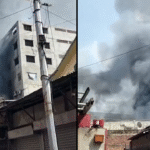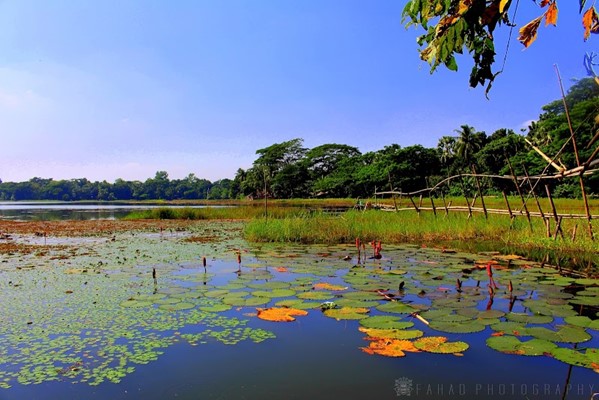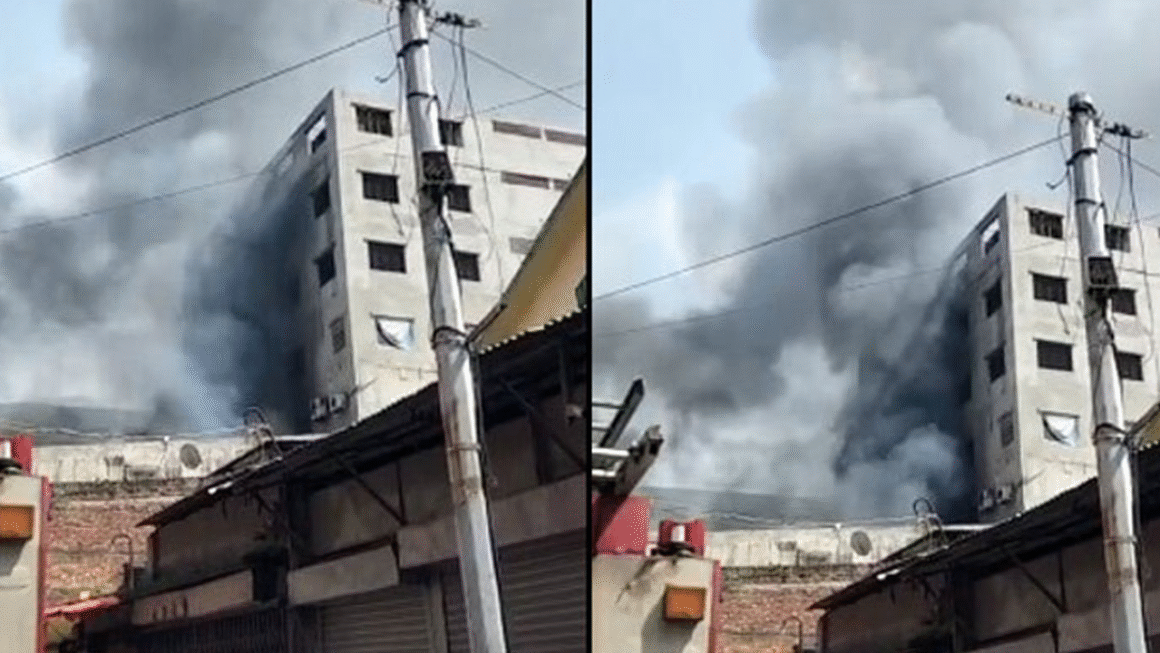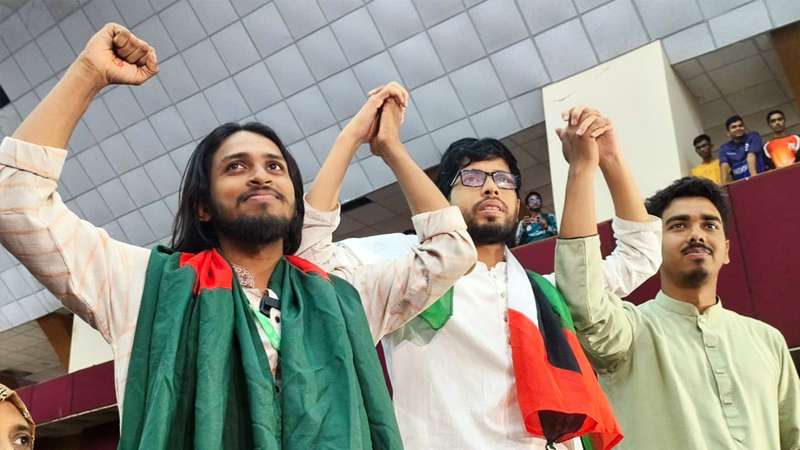Introduction to Khan Jahan Ali Kortik Khononkrito Boro Dighi-
Khan Jahan Ali Kortik Khononkrito Boro Dighi is one of the largest and most historically significant water reservoirs in the Bagerhat District of Bangladesh. Situated adjacent to the famous Khan Jahan Ali’s Shrine in Bagerhat, this enormous tank stands as a testament to the advanced civil engineering and water management practices introduced by the revered Muslim saint and administrator, Khan Jahan Ali, in the 15th century. The term “Boro Dighi” literally translates to “Large Tank,” and its utility, size, and architectural harmony with the nearby structures make it a vital heritage site in the region.
Historical Background-
The Khan Jahan Ali Kortik Khononkrito Boro Dighi was excavated during the reign of Sultan Nasiruddin Mahmud Shah of the Bengal Sultanate. Khan Jahan Ali, a renowned saint and administrator, was responsible for urbanizing the area of Bagerhat, then known as Khalifatabad. He constructed mosques, roads, bridges, and water tanks to develop the area as an Islamic township. The Boro Dighi was one such public infrastructure aimed at providing fresh water to the community for daily use, religious ablutions, and agriculture.
The excavation of Boro Dighi is attributed solely to Khan Jahan Ali’s leadership. Historical records suggest that the tank served thousands of people and was a model for other water conservation projects in medieval Bengal. The tank’s presence beside the Khan Jahan Ali Mazar (shrine) adds to its spiritual significance.
Architectural Features-
The Boro Dighi is rectangular in shape and spreads across a vast area, believed to be approximately 1,320 feet in length and 600 feet in width. The banks of the tank are meticulously sloped and stabilized using laterite stones and bricks—an architectural style common in the structures built under Khan Jahan Ali’s direction.
A distinctive feature of the Boro Dighi is its symmetry and the harmony it maintains with the surrounding religious monuments, such as the Sixty Dome Mosque (Shat Gombuj Masjid) and the Nine Dome Mosque. The water body not only served a utilitarian purpose but was also part of the landscape design of the medieval Islamic township.
The tank’s water still remains fresh and is considered sacred by many visitors and devotees who come to pay respects at the nearby shrine. Fish and turtles inhabit the waters, and the tank contributes to the ecological balance of the area.
Location and Accessibility-
The Khan Jahan Ali Kortik Khononkrito Boro Dighi is located in the heart of Bagerhat, within walking distance of Khan Jahan Ali’s Shrine. Bagerhat is about 40 km southeast of Khulna City and can be easily accessed via road from Dhaka and Khulna.
- Address: Khan Jahan Ali Mazar Complex, Bagerhat Sadar Upazila, Bagerhat District, Bangladesh
- Nearest Railway Station: Khulna Railway Station
- Nearest Airport: Jessore Airport (approximately 100 km away)
Local rickshaws and auto-rickshaws are available to take tourists to the site from anywhere in Bagerhat.
Cultural and Religious Importance-
The Boro Dighi is not just a water body—it holds immense cultural and religious value for the local people. It is believed that the tank was excavated under divine guidance and that its waters have healing properties. Pilgrims visiting Khan Jahan Ali’s shrine often take a sip of the water or use it for ablution before prayers.
In addition, the Boro Dighi has been a symbol of community welfare and Islamic philanthropy. It reflects the tradition of Sufi saints like Khan Jahan Ali, who integrated social service with spiritual enlightenment. Festivals and religious events at the shrine often extend to the tank’s surroundings, creating a lively spiritual atmosphere.
Preservation and Heritage Status-
The Khan Jahan Ali Kortik Khononkrito Boro Dighi is listed as part of the UNESCO World Heritage Site known as the “Historic Mosque City of Bagerhat.” The Department of Archaeology of Bangladesh maintains the site under its preservation program, ensuring the tank and its surrounding structures are protected from modern encroachments and natural degradation.
Despite these efforts, the site occasionally faces threats from pollution and unauthorized constructions. Local and international heritage organizations are working to raise awareness about its preservation.
Environmental and Ecological Role-
The Boro Dighi continues to serve as an ecological haven. It is home to a variety of aquatic life, including different species of fish, turtles, and birds. The tank helps maintain the microclimate of the region and supports groundwater recharge. During the dry season, it acts as a water reservoir for the local community.
Trees and plants growing along its banks provide shade and contribute to the area’s scenic beauty, making it a serene spot for visitors and locals alike.
Tourist Attractions Nearby
Tourists visiting the Khan Jahan Ali Kortik Khononkrito Boro Dighi can explore several other attractions in and around Bagerhat:
- Sixty Dome Mosque (Shat Gombuj Masjid): The most famous mosque built by Khan Jahan Ali.
- Nine Dome Mosque (Nau Gombuj Masjid): Another historical mosque located nearby.
- Khan Jahan Ali’s Shrine: The resting place of the saint himself.
- Ronvijoypur Mosque: Known for having the largest dome in Bangladesh.
- Ghora Dighi: Another historic water reservoir.
- Kodla Math: A Hindu monastery showcasing religious harmony in the area.
Best Time to Visit-
The best time to visit Khan Jahan Ali Kortik Khononkrito Boro Dighi is during the winter months, from November to February, when the weather is dry and pleasant. This period also coincides with several religious festivals, attracting large numbers of pilgrims and tourists. Visiting during this time ensures a comfortable experience and allows one to explore other nearby historical attractions.
Conclusion-
Khan Jahan Ali Kortik Khononkrito Boro Dighi is more than a historical artifact—it’s a symbol of medieval Bengal’s ingenuity, spirituality, and community planning. As one of the oldest and largest tanks in Bangladesh, it continues to serve as a functional reservoir, a place of devotion, and a timeless piece of architectural legacy. Visiting this site offers not only a glimpse into the past but also an appreciation for sustainable infrastructure and spiritual harmony.
Whether you’re a history enthusiast, a spiritual seeker, or an eco-tourist, the Boro Dighi stands as a must-visit destination in Bagerhat. It embodies the essence of Khan Jahan Ali’s contributions to society and offers a peaceful retreat into history and nature.
Frequently Asked Questions (FAQs)-
Q: What is Khan Jahan Ali Kortik Khononkrito Boro Dighi?
A: It is a large historical water tank excavated by the Sufi saint and administrator Khan Jahan Ali in the 15th century in Bagerhat, Bangladesh.
Q: Why is Boro Dighi significant?
A: The tank provided fresh water to the people of Khalifatabad and stands as a symbol of medieval urban planning, spiritual dedication, and architectural excellence.
Q: Is Boro Dighi part of a UNESCO World Heritage Site?
A: Yes, it is part of the “Historic Mosque City of Bagerhat,” which has been recognized as a UNESCO World Heritage Site.
Q: What can tourists see near Boro Dighi?
A: Nearby attractions include the Sixty Dome Mosque, Khan Jahan Ali’s Shrine, Nine Dome Mosque, and other historical mosques and tanks.
Q: Is the water of Boro Dighi still used today?
A: Yes, it is still considered sacred and used by visitors for religious purposes and community needs.
Q: How do I reach Boro Dighi from Dhaka?
A: You can take a bus or train to Khulna and then travel by road to Bagerhat. The tank is located next to Khan Jahan Ali’s Shrine.
Q: Is there an entry fee to visit Boro Dighi?
A: No, visiting the tank itself is free, though some nearby attractions may have minimal entrance fees.
Q: When is the best time to visit Boro Dighi?
A: The best time is between November and February, when the weather is most favorable for travel and exploration.













